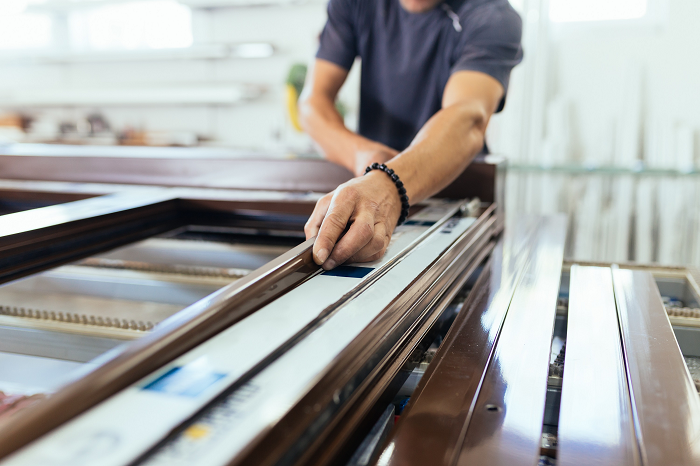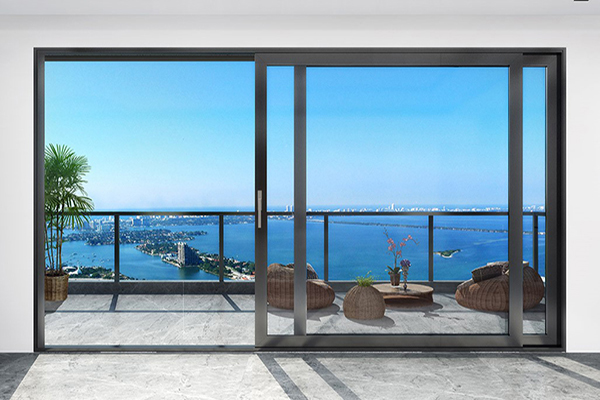when-you-get-the-alloy-window-how-should-you-install-it
I. On-site Verification
1. Conduct on-site inspection to check whether the dimensions of the opening match those on the drawings, ensuring the smooth installation of the finished products.
2. Clean the opening and rectify any irregular openings.
II. Lifting and Moving into the House
1. When hoisting the finished products into the house, firstly, ensure safety; secondly, ensure that the finished products do not flutter in the air and collide with the wall, causing damage to the finished products.
2. For elevator transportation: When transporting upstairs, pay attention to your own products as well as the facilities of the staircase.
3. Once the materials are moved upstairs, find a suitable location and lean them against the solid wall at an angle of about 70°.
III. Checking the Goods
1. Count the number of finished products and verify that it is correct.
2. Unpack and inspect to check whether the accessories are complete and whether there is any damage.
3. If there are any differences in quantity, missing accessories, or damaged products, contact the factory immediately to discuss solutions.

IV. On-site Inspection of the Implementation of Safety Measures
Implement the measures for resolving the safety hazards identified in the preliminary inspection:
1. Check whether safety equipment such as safety helmets and safety belts are qualified.
2. Have on-site personnel conduct mutual inspections to check whether there are any omissions in safety measures; ensure that the safety protection measures are effective and without omission.
3. It is mandatory to wear safety helmets and safety belts, and tie the indoor end of the rope to a strong and stable object.
VII. Fixing the Main Frame
1. Use tools such as a level to determine the positions of the vertical line, horizontal line, and in-out line.
2. When determining the three lines, use an infrared level or a theodolite to check and ensure that the error is within 2 mm.
3. Actively ask the owner if there are any special requirements for the installation.
4. Reconfirm the dimensions of the opening and the opening direction.
5. After removing the bead, mark its position clearly and place it in order.
6. Select appropriate fasteners for fixing according to the actual environment of the construction site, such as expansion bolts or self-tapping screws.
7. Number and distribution of fixing points: The spacing between the corners should be ≤ 200 mm, and the spacing in other parts should be ≤ 500 mm.
8. The installation holes on the lower frame must be sealed with glue or special covers before installing the glass.
9. The installation fixing holes must be drilled on the aluminum material, not on the heat insulation strip, and the tightness of the screws should be moderate.
10. Requirements for fasteners: The nylon expansion bolt should be 8*120; the fixing plate should have a thickness of not less than 1.5 mm, a width of not less than 20 mm, and a distance from the wall of not less than 50 mm; it should not be directly installed at the intersection of the middle cross plate and the middle vertical stile; use passivated galvanized self-tapping screws, and the screwing depth should not be less than 50 mm.
11. Clean the dust from the drilling with a blower before installation.
VIII. Filling and Treating the Gap between the Frame and the Wall
1. Before filling with foam, clean the dust and debris between the frame and the wall and wet the surface.
2. The foam should be evenly and completely filled into the gap to achieve a sufficient connection between the frame and the wall.
3. It is strictly prohibited to get the foam on the window.
IX. Sealing the Exterior Wall
1. Clear the debris between the wall and the window and clean the dust with a brush.
2. Select an appropriate nozzle according to the size of the gap before applying the glue.
3. The surface of the glue should be smooth, continuous, and without any broken or ugly appearance.
4. Pay special attention to sealing the four corners well and notice the drain hole cover.
X. Glass Installation
1. Before installation, clean the debris in the groove of the window frame. Before installing the glass, cover the drain hole.
2. The window and door glass should not directly contact the profile. Set 2 groups of support blocks at the bottom edge of the glass (the number should be matched according to the length of the window frame), and set positioning blocks on the other three sides. The installation position should be at 1/4 of the side length from the groove corner. The length of the glass support block should be not less than 50 mm, and the length of the positioning block should be not less than 25 mm. The width of both is the same as that of the glass groove, and the thickness is not less than 5 mm.
3. Fill the space between the glass and the frame with foam, ensuring it is filled solidly and completely (depending on the local climate conditions to decide whether this process is needed).
4. Place the tempered glass mark in the lower right corner and clean the glass before installation.
5. Use the method of squeezing the diagonal to position and bear the weight of the glass block of the window sash.
6. Installation of the bead: The glass bead should be fastened tightly and be flat without warping. The assembly gap between the glass bead and the main profile should be ≤ 0.3 mm, and the difference in surface height between the glass bead and the main profile should be uniformly consistent, with a deviation of ≤ 0.3 mm. The docking method of the corner of the glass bead should meet the design requirements, with an assembly gap of ≤ 0.3 mm and a surface height difference of ≤ 0.3 mm.
7. The installation of the support block should not block the drain holes and drainage channels.
XI. Installation of Sealing Strips
1. The sealing strips should be connected without gaps to achieve full sealing.
2. Consider the influence of temperature on the elasticity of the sealing strips and set the length of the sealing strips reasonably, with a margin of 1.5 - 2% on each side.
3. The indoor sealing strips are required to be flat and neat. Each glass can only have one joint of the sealing strip, and the joint should be placed in an unobvious position.
XII. Installation and Debugging of Hardware
1. Debugging of opening and closing: Open and close several times to find the positions that need debugging.
2. Debugging of top-hung: Ensure that there is no scraping during both flat opening and top-hung opening, and turn the handle to an appropriate position.
3. Inspection of fixing parts: After debugging, reconfirm whether the fixing screws of the hardware are firmly fixed.
4. Cover the process holes.
5. Inspection: Open the door several times before fixing it to check whether there is any floating phenomenon of the door.
6. Inspection of gaps: The gaps on the four sides between the door leaf and the door frame should be consistent. After ensuring the smooth use of the door lock, hand the key to the person in charge.
XIII. Cleaning
1. Tool storage: Count the tools and store them completely.
2. Cleaning of windows and doors: Clean the windows and doors to make them clean, without stains and debris.
3. Garbage cleaning: Clean up all the garbage generated on the installation site and in the corridor, and take it away from the site to achieve a clean site after work.
4. Cleaning requirements: Restore the owner's home to its original state. Protect the installed finished products to avoid damage to the windows and doors caused by decoration, and ensure cleanliness.










